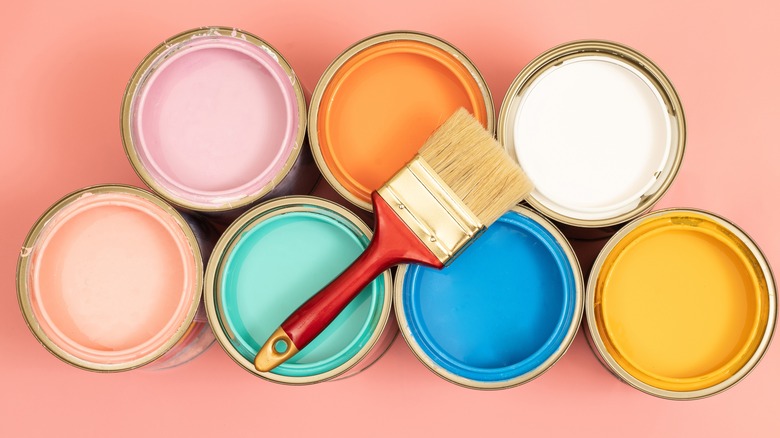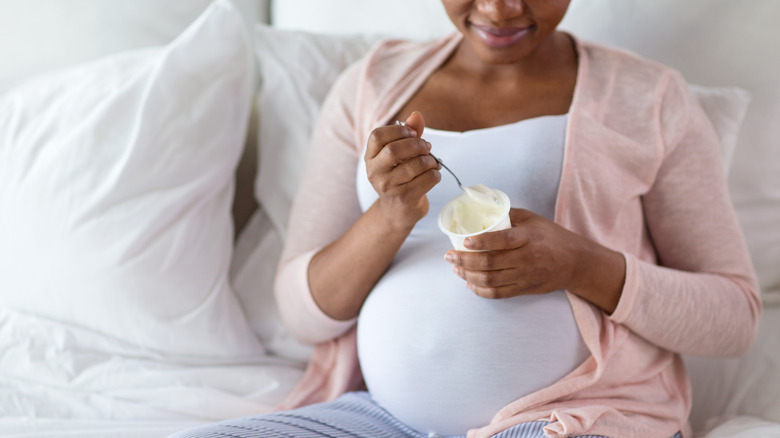What It Really Means When You Want To Eat Paint
The compulsion to eat inedible items has been cited in medical journals for centuries (via Journal of Medical Case Reports). Today it goes by the name of pica. While its prevalence rates can be tricky to pin down, it is seen more in women than in men, as per Pharmacophore.
Pica is a complex eating disorder. It's characterized by the uncontrollable craving and consumption of non-food substances that have no nutritional value (via Pharmacophore). Some common things people want to eat are clay, soil, starch, and ice, but it can even include potentially dangerous items, like paint or glass. In order for a diagnosis of pica to be made, symptoms must be present for at least a month (via Nursing Open).
In some Ghana communities, pica is believed to be used as "spiritual protection" or a cure for diseases. However, children under the age of two aren't commonly diagnosed since chewing on objects tends to be a normal part of their development, as per a 2014 study. A number of causes have been suggested to underlie pica. Here are a few possible explanations for this mysterious condition.
Why do people eat non-food substances?
It's often suggested that pica stems from a nutritional deficiency (via Pharmacophore). For instance, depleted iron and zinc levels may alter an individual's sense of taste and smell. Low iodine, on the other hand, can throw their hormones off balance. This in turn can lead to bizarre cravings.
Pica can even be seen in women who are pregnant. In fact, 27.8% of women around the world can experience the eating disorder while carrying a child or breastfeeding (via Pharmacophore). It's suspected that this might be due to anemia, which is usually caused by a lack of iron. Luckily, a 2016 study has shown that iron therapy can alleviate pica-like symptoms in some people.
Nevertheless, the condition is sometimes attributed to underlying cognitive or psychological impairments. It often shows up with disorders like autism, schizophrenia, and obsessive-compulsive disorder (OCD). However, some researchers believe that stressful situations could also be linked to pica (via Psychiatric Times). This includes pregnancy, coming from a home with a disorganized family structure, or feeling little to no attention from the family or mother.
What are some of the possible complications?
For some cultures, pica may be relatively harmless, but the ingestion of sharp or hazardous materials has the potential to lead to serious health problems and complications, as per Pharmacophore. For example, a 13-year-old girl who compulsively picked off and ingested paint chips from her apartment walls was found to develop lead poisoning, according to a 2022 study published in the Archives of Environmental & Occupational Health. Chronic lead toxicity can result in all sorts of neurological and physiological issues in the long term (via Pharmacophore).
In recent years, health experts have noticed a surprising rise in pica, as per ITV News. So if you or someone you know is experiencing pica-like symptoms, don't hesitate to reach out for help. There are effective and evidence-based treatments available out there for eating disorders, including pica (via Journal of Behavioral and Cognitive Therapy). Medications that stimulate dopaminergic activity may also help reduce pica behavior, according to Pharmacophore.



